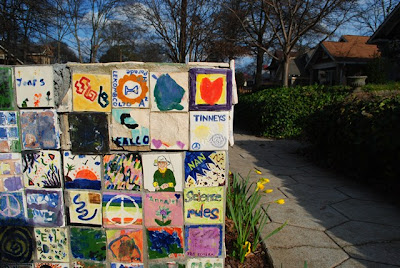Our country's recent election results have the cable and internet political pundits focused obsessively on the demographics of a "new America," while many long-time established political leaders struggle to understand the shifts that have happened in the past couple of decades. The historical truth is, The United States has always been a land where newcomers arrive looking for opportunities and "The American Dream," and in doing so, they enhance the consistency of, and add new flavors to, our proverbial melting pot. They become Americans, and to a degree, America becomes them.
The next demographic shifts are always happening in different parts of the nation, and one place where the next shift is already taking root is the Atlanta suburb of Clarkston. Located about twenty minutes to the east of downtown Atlanta, Clarkston has transformed in the past 25 years from a sleepy, unremarkable small railroad town on the edge of Atlanta, to, as the New York Times recently described it, "the most diverse square mile in America."
Clarkston was founded in the 1830s, when the Georgia Railroad built a line through, what was at the time, mainly goat farms, and the area was often referred to as Goatsville and Angora Heights. General W.W. Clark was the director of the Georgia Railroad at the time of the railroad expansion, and Clarkston was named for him. Through most of the 1900s, Clarkston grew slowly and quietly on the edge of Atlanta and most of its residents were long-time Southerners. Then, in the early 1990s, Clarkston became designated by several federal and national refugee serving agencies as a good place to resettle newly-arrived refugees fleeing some of the world's most brutal regimes and horrifying wars. They arrived by the thousands, from Ethiopia, Viet Nam, Burma, Bosnia, Congo, Eritrea, Bhutan, South Sudan, Nepal, Gambia, Cote d'Ivoire, Liberia, Somalia, Kosovo, Burundi, Afghanistan, Iraq, and Sierra Leone. There are now more than 60,000 refugees in Clarkston proper and the surrounding neighborhoods. Clarkston High School teaches young people from over 50 nations, many of whom have survived unimaginable circumstances. As a friend of mine, who is a City of Clarkston council member recently told me, "our school challenges aren't standardized tests...our challenges are more along the lines of how to help students who were child soldiers, or saw their grandparents murdered in front of them."
As with every new ethnic group before, the newcomers in Clarkston are becoming settled, getting educated, and starting businesses. There are Asian and African markets, Somali clothing stores, and its easy, in this small town, to find a restaurant serving Ethiopian, Eritrean, or Nepali cuisine. There are Buddhist temples, multi-cultural mosques, and Baptist churches on the same street. The Atlanta School for the Deaf, located in Clarkston, the remaining old-timers, and a thriving and growing LGBT community deepen the town's diversity even more. And, just last year, Creative Loafing named Clarkston as one of the "coolest" neighborhoods in Atlanta, and described it as a "post-hipster nesting place," and a "punk rock retirement village." Clarkston really is the world's small town.
As with every new ethnic group before, the newcomers in Clarkston are becoming settled, getting educated, and starting businesses. There are Asian and African markets, Somali clothing stores, and its easy, in this small town, to find a restaurant serving Ethiopian, Eritrean, or Nepali cuisine. There are Buddhist temples, multi-cultural mosques, and Baptist churches on the same street. The Atlanta School for the Deaf, located in Clarkston, the remaining old-timers, and a thriving and growing LGBT community deepen the town's diversity even more. And, just last year, Creative Loafing named Clarkston as one of the "coolest" neighborhoods in Atlanta, and described it as a "post-hipster nesting place," and a "punk rock retirement village." Clarkston really is the world's small town.
I've been chronicling Atlanta for over three years now, and this chapter really hits home for me, because I live in Dunaire, a next-door neighbohood to Clarkston, and so this is really about my stomping ground. It is an exciting place to call home, and I love having the opportunity to watch the future of America take shape right in my backyard.


































































